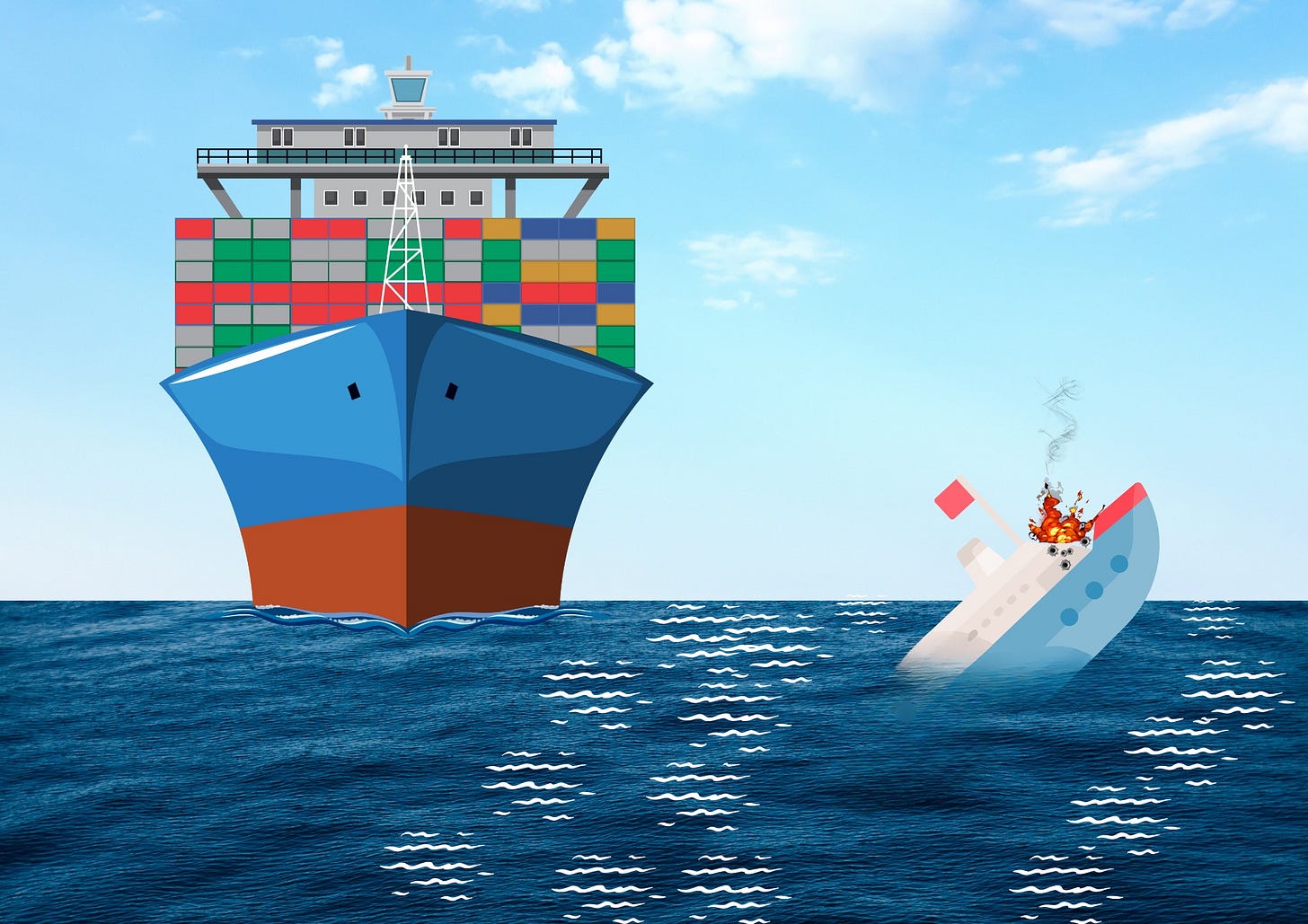I have recently been reading about how, throughout history, the sea has been both a highway for commerce and a battlefield for power. From the spice routes of the Indian Ocean to the naval blockades of the World Wars, control of maritime lanes has shaped global prosperity and national destinies. Scholars such as Alfred Thayer Mahan and Nicholas Spykman argued that mastery of the seas lies at the heart of international influence, a reality still reflected in today’s trade patterns.
That got me thinking in broader terms about how the sea is also a useful metaphor for the global political economy. Trade and conflict remain the core forces shaping international relations, while politics acts as captain and navigator, steering flows of investment, resources, and opportunity across shifting waters.
The Sea as a System
The world economy functions like an interconnected ocean defined by currents, tides, and storms. Disturbances in one region tend to ripple globally. When politics prioritises trade, it raises the tide, lifting most boats. Open access to ports and secure sea lanes are crucial milestones that enable goods and capital to flow, driving growth through comparative advantage and shared opportunities.
War, however, is different; it is collective violence. It acts like an undertow, dragging progress under. As Clausewitz observed, it is the continuation of politics by other means. It represents a breakdown of diplomacy and is engineered by political leaders seeking relative gains. Those exposed to fragile routes or alliances tend to bear the greatest risk. The victors of violent conflict tend to reshape trade in ways that are best aligned with their priorities.
Trade, however, can itself generate disruptive undertows: large job losses in vulnerable sectors, intellectual property theft, discriminatory trade practices, and the turning of interdependence into leverage can lead to heightened tension and open conflict. And while war’s destruction is undeniable, it has also historically fueled innovation, from radar to the internet, boosting civilian standards of living, but also disrupting traditional industries.
Politics as Captain and Navigator
It is political leaders who decide if nations ride trade’s tide or succumb to the undertow of conflict. Nations come in all shapes and sizes: some are like aircraft carriers, commanding the ocean and setting the currents. Others are smaller vessels, such as a tugboat or frigate, that have little choice but to adjust their course and follow the path carved out by the larger fleets.
After the 2008 crisis, key governments in the largest economies acted as captains steering through turbulence, flooding markets with liquidity, and calming investor nerves. Smaller nations followed these currents with borrowing and investment.
Post-COVID, the tides shifted sharply: inflation rose, energy routes faced disruption, and great-power rivalry intensified. At this point, politics managed to navigate through this crisis by pivoting toward resilience over efficiency, tightening monetary policy, and prompting supply chain realignments. These dynamics demanded that businesses rethink routes and trim their sails.
Institutions: Masters of Arms and Lighthouses
Institutions, meanwhile, act as a sort of master of arms. They enforce the rules, keep fleets in line, and maintain order within the lanes. Central banks such as the Federal Reserve or the ECB, trade organisations such as the WTO, military alliances such as NATO, and financial regulators all seek to shape how trade, war, and politics interact by ensuring the rules are applied and consequences observed.
But even so, the master of arms is not infallible. Policies imposed by governments or political blocs, such as sanctions, tariffs, or sweeping regulations, can backfire or create unintended risks, and institutions have to respond within those constraints.
At the same time, institutions can also appear like steady lighthouses, guiding vessels through dark or stormy waters. Yet they don’t always shine for the common good. Built and maintained by politicians, they can float with the currents of rivalry and power. So, business leaders must see institutions as both enforcers and imperfect guides; they are anchors of order, but they can also drift, refracting rather than clarifying the light.
Weather, Fog, Icebergs, and Wind Shifts
Every voyage faces weather. In the political economy, it could manifest itself as inflationary storms, economic winds, and diplomatic squalls. Hidden dangers lurk beneath, too. Fog symbolises uncertainty and misinformation, for example, ambiguous AI regulation, cybersecurity breaches, and grey-zone conflicts disrupting trade under the radar. Icebergs are those sudden shocks, those Titanic-like moments where debt crises, fragile supply chains, and climate disasters erupt without warning. Meanwhile, wind shifts reflect sudden changes in sentiment. That could be investor selloffs, consumer panics, or backlash against inequality. The seas are inherently unpredictable; reading these forces is as essential as knowing the tides.
Navigating the Political Economy: A Leader’s Mandate
Trade, conflict, institutions, and shocks tend to form feedback loops. A storm in one place sends ripples worldwide. For example, EU sanctions on Russian energy reshaped routes, forcing fleets to adjust. The rerouting of energy trade away from Russia, for instance, directly inflated European manufacturing costs, while simultaneously handing a competitive advantage to U.S. producers. This is a prime example of how systems change matters and a reason why business leaders must move beyond observation to active navigation.
Here is a practical voyage plan:



